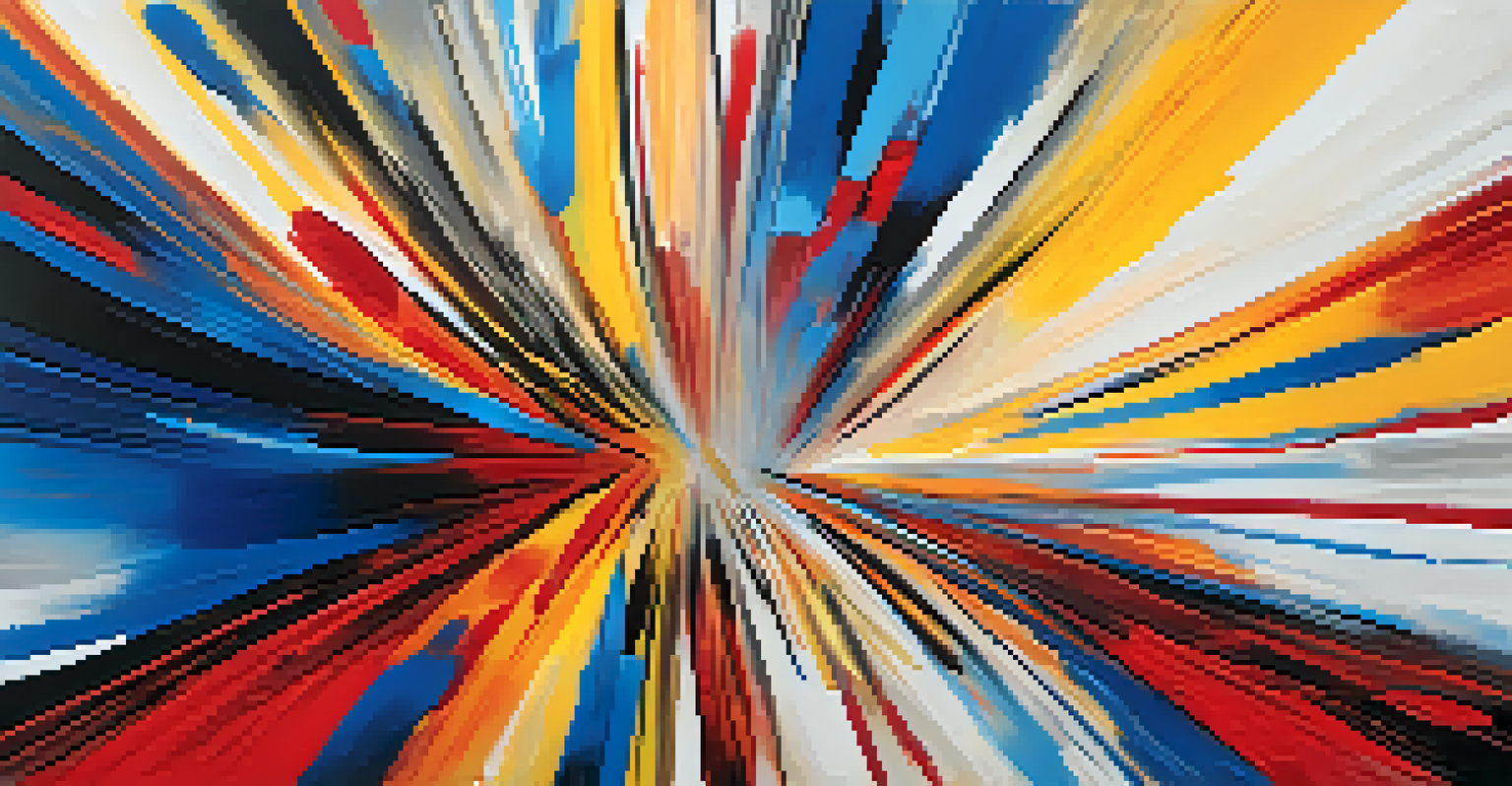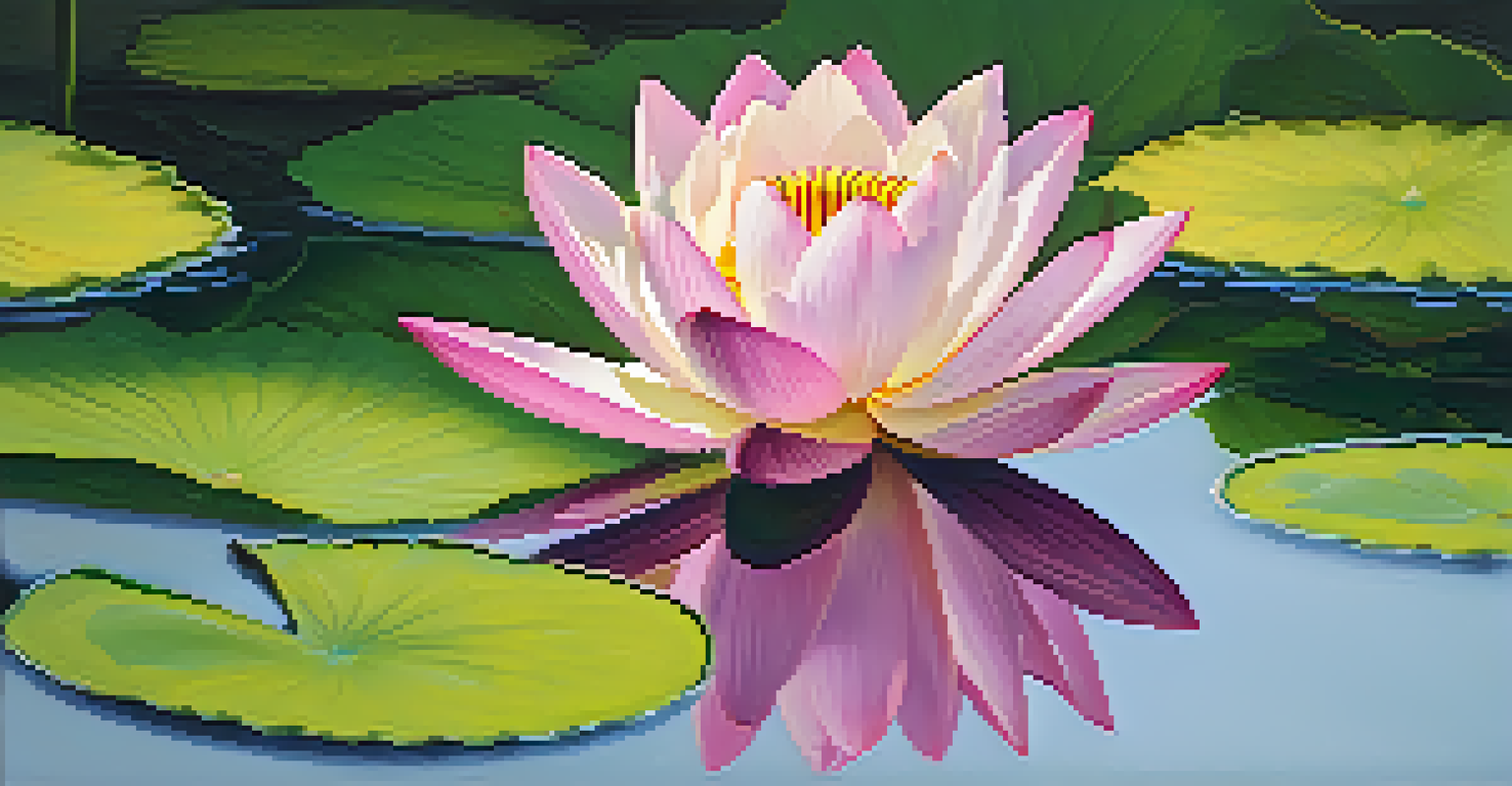Symbolism in Art: Messages from the Subconscious World

Understanding Symbolism: A Gateway to the Subconscious
Symbolism in art serves as a powerful language that transcends words, allowing artists to convey complex emotions and ideas. This form of expression taps into the subconscious, where symbols can evoke deep, personal meanings for both the creator and the viewer. Think of it as a secret code; while the surface may seem straightforward, the depths reveal layers of insight waiting to be uncovered.
Art is the most beautiful of all lies.
For instance, the color red often represents passion or anger, while a dove typically symbolizes peace. These associations can vary widely across cultures and personal experiences, adding to the richness of artistic interpretation. When we witness an artwork laden with symbolism, we are invited to explore our interpretations, making the experience personal and unique.
Ultimately, understanding symbolism in art encourages us to engage more thoughtfully with what we see, prompting questions about the artist’s intention and our own reactions. It transforms a simple viewing into an experience of discovery, where hidden meanings resonate with our individual life stories.
Historical Context: How Symbolism Evolved in Art
Symbolism in art has a rich history, tracing back to ancient civilizations that used imagery to convey messages about life, death, and the divine. In the Medieval period, for instance, artists used religious symbols to communicate complex theological concepts, making their art accessible to a largely illiterate population. This practice laid the groundwork for later movements that sought to explore deeper meanings through visual representation.

As we moved into the Renaissance, artists began to incorporate more personalized symbolism, reflecting humanism and individual experience. For example, Botticelli’s 'Primavera' is filled with mythological symbols that represent love, spring, and the beauty of life, inviting viewers to uncover the story behind the imagery. This shift highlights how symbolism evolved from a communal language to one that embraces personal narratives.
Symbolism Connects Artist and Viewer
Symbols in art create a bridge between the artist's intentions and the viewer's personal experiences, enriching the interpretation of artwork.
In the modern era, artists like Salvador Dalí and Frida Kahlo utilized symbolism to delve into psychological themes, making the subconscious a central focus of their work. Their art challenges viewers to confront their own subconscious feelings and experiences, demonstrating how symbolism continues to evolve and resonate across generations.
Exploring Common Symbols and Their Meanings
Common symbols in art can often elicit universal responses, yet their meanings can vary significantly based on context. For instance, the skull is a symbol that can represent mortality and the fleeting nature of life, often prompting viewers to reflect on their own existence. In contrast, flowers can symbolize beauty and transience, but their specific meanings might shift depending on the type of flower or the surrounding imagery.
The artist is the creator of beautiful things. To reveal art and conceal the artist is art's aim.
Additionally, many symbols are culturally specific; for example, the lotus flower is revered in many Asian cultures as a symbol of purity and enlightenment. Understanding these nuances not only enriches our appreciation for the artwork but also enhances our connection to the cultures and histories that shaped them. This exploration of symbols opens avenues for dialogue and understanding across diverse backgrounds.
As viewers, we can actively engage with these symbols, bringing our own experiences and emotions into play. By recognizing the layers of meaning behind common symbols, we unlock new perspectives and deepen our engagement with the artwork.
The Role of Personal Experience in Symbol Interpretation
Personal experience plays a crucial role in how we interpret symbols in art. Each viewer brings their own history, emotions, and cultural background into the viewing experience, which can dramatically alter the meaning they derive from a piece. For instance, a painting depicting a stormy sea might evoke feelings of turmoil for one person, while another might see it as a representation of freedom and adventure.
This subjective experience is what makes art so powerful—it invites us to reflect on our own lives and emotions. When we encounter symbols that resonate with our personal narratives, we form a connection with the artwork that can be both profound and transformative. This personal journey through symbolism allows us to discover not just the artist's intention but also our own story.
Historical Roots of Symbolism
The evolution of symbolism in art reflects its historical context, transitioning from communal messages in ancient times to personal narratives in modern works.
By acknowledging our individual perspectives, we create a richer dialogue with the artwork and foster a deeper understanding of both ourselves and the artist's message. In this way, symbolism serves as a bridge, linking the personal to the universal.
Symbolism in Modern Art: A Reflection of Contemporary Society
In modern art, symbolism has taken on new dimensions, often reflecting contemporary societal issues and personal identities. Artists today use symbols to comment on everything from social justice to mental health, creating a visual language that speaks to the complexities of modern life. For instance, Banksy’s street art often employs symbols of rebellion and irony to challenge societal norms.
This evolution of symbolism in modern art is not just about aesthetics; it acts as a commentary on current events and personal experiences. Artists like Yayoi Kusama use polka dots as a symbol of infinity and self-obliteration, inviting viewers to consider their place in the universe in an age of overwhelming information. Such symbolism resonates deeply in our fast-paced, interconnected world.
By engaging with these contemporary symbols, viewers can better understand the artist’s perspective and the broader context of the work. This engagement fosters a dialogue about the issues that shape our lives today, making modern art a relevant and essential aspect of cultural discussion.
The Psychological Impact of Symbols in Art
The psychological impact of symbols in art is significant, as they can evoke emotions and thoughts that resonate deeply within us. Psychologists often argue that symbols bypass our rational mind, tapping directly into our feelings and subconscious. This is why a simple image can stir up complex emotions or memories, connecting us to experiences we've had or long-forgotten feelings.
For example, a painting of a serene landscape may evoke feelings of peace and nostalgia, while a chaotic abstract piece might trigger anxiety or confusion. By understanding the psychological implications of these symbols, we can gain insight into our emotional responses and the universal human experience. This exploration can also lead to personal healing and growth, as we confront and process our feelings through art.
Symbols Reflect Contemporary Issues
Modern art uses symbolism to comment on societal issues and personal identities, fostering dialogue about relevant topics in today's world.
Moreover, the therapeutic potential of art is increasingly recognized, with many practitioners using symbolic art to help individuals explore their emotions in a safe environment. Engaging with art symbolically can facilitate self-discovery, making it a powerful tool for mental well-being.
Conclusion: Embracing the Journey of Symbolism in Art
In conclusion, the journey through symbolism in art is an enriching experience that encourages us to delve deeper into both the artwork and ourselves. By understanding the historical context, personal experiences, and psychological implications of symbols, we open ourselves to new interpretations and insights. This exploration not only enhances our appreciation for art but also fosters a deeper connection to the human experience.
As we engage with art, we become participants in a larger conversation about meaning and emotion. We learn that every symbol has the potential to tell a story, one that is shaped by the artist's intent and our individual perceptions. This dynamic interaction is what makes art so compelling and relevant, transcending time and culture.

So, the next time you encounter a piece of art, take a moment to reflect on the symbols present. Embrace the journey of discovery, and allow the artwork to speak to you in ways that resonate with your own subconscious world.